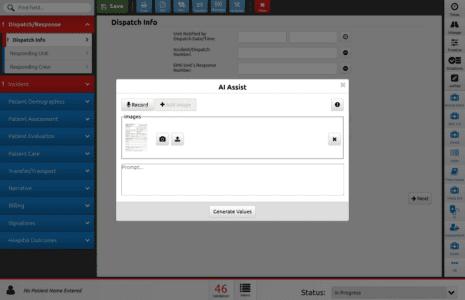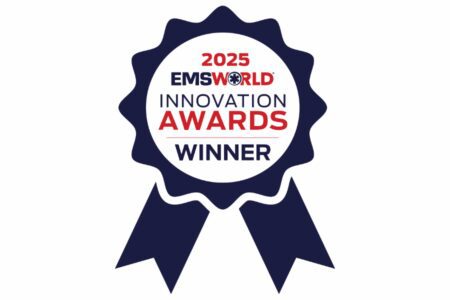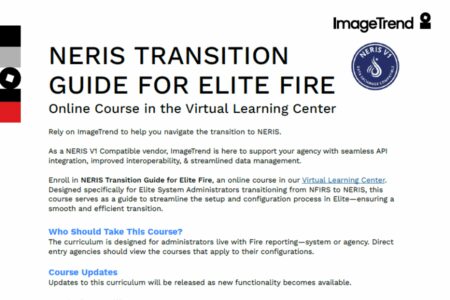When emergency departments are backed up and ambulance availability is stretched thin, every 911 call matters. Sacramento Metro Fire Department noticed a surge in requests for non-emergent help, such as medication refills, chronic pain, and months-old injuries. It became clear that the standard “transport everyone to the ER” playbook no longer made sense.
This blog highlights insights shared by Scott Perryman, Battalion Chief and PA-C, during a recent interview about Sacramento Metro’s Mobile Integrated Health (MIH) program. You can scroll down to watch the full video.
“We had a lot of high 911 utilizers, and a lot of people calling 911 for lower acuity issues,” said Perryman, who oversees the MIH program. “They’re not necessarily emergencies, but more like urgencies. 70% of the time, we’re able to fix it right there in the field without them going into the emergency room. The patient is saving hours, and my crews are able to go back into service faster.”
Rather than simply adding more ambulances, Sacramento Metro paired its paramedics with advanced providers (nurse practitioners and physician assistants) who can deliver definitive care on scene.
Using Advanced Providers to Improve On-Scene Care
Perryman likens the partnership to a football team: “You have your paramedic, and now you have that advanced provider—it’s like having a quarterback and a wide receiver. Together, they’re a pretty unstoppable team.”
Many of the department’s 14 part-time advanced providers also work in emergency departments and specialty clinics, giving them instant rapport with hospital staff and deep clinical insight.
- “They come in and say, ‘Oh, that’s one of our patients,’” Perryman said. Their hospital experience allows them to step in with context and connections, helping bridge gaps between field care and ongoing treatment.
- One nurse practitioner runs a burn clinic at UC Davis and brings that specialized expertise directly into the field. With a background in both hospital care and the fire service, she’s able to connect with crews and deliver advanced wound care on scene— “no one is better at wound management than her.”
- A geriatrician with no prior EMS background now supports a population of older adults that represents more than 35% of their calls, bringing specialized expertise the team didn’t know it needed.
By combining frontline EMS experience with specialized clinical backgrounds, the team is equipped to solve more problems on scene and improve care continuity across the board.
Tracking MIH Outcomes with ImageTrend Data
Data is Perryman’s currency when talking to board members, politicians, and community leaders. “Being able to say we treat 70% of these calls in the field and have reduced high-utilizer cases by over 43%—those are real numbers that everyone wants to see.”
With ImageTrend’s software, the team logs:
- Incidents (traditional 911 responses)
- Follow-up visits
- Phone calls, texts, and emails (all the “in-between” touches that keep patients on track)
Providers can open a record and say, “I see you talked with our PA last week. How did that appointment go?” That continuity fuels better outcomes and richer reporting.
Even with a relatively small footprint, comprising just one full-time unit and one part-time unit, the results are already noticeable.
Reducing Emergency Room Waits and Offload Times
One area where the program has had a measurable impact is psychiatric care, often a major contributor to emergency room delays. “There was a study that showed psychiatric patients spend an average of 30 hours in the ER,” Perryman said. “Last year, we diverted 96 patients directly to appropriate facilities or resources—that’s nearly 2,000 ER bed hours saved.”
The ripple effects of that kind of impact are felt across the system. Crews are no longer stuck waiting to transfer patients, and frequent callers are finally getting connected with the care they need. Perryman shared one example of a patient who received stitches on-site during a church service and was able to stay for the rest of it. “Everyone was talking about how amazing it was,” he said. “That kind of visibility makes an impact.”
Starting a Mobile Integrated Health Program
No two communities are the same, and that’s exactly why there’s no one-size-fits-all approach to building a community-based response model. Perryman emphasizes the importance of designing a program around your agency’s specific needs and population.
“You need to figure out what your area needs and build around that,” he said. “If you customize it, it will work.”
He’s seen this firsthand through collaboration with other departments. Los Angeles City Fire runs a community health team in Skid Row, responding to a highly vulnerable and underserved population. Just a few miles away, Beverly Hills Fire operates a similar model on Rodeo Drive, proof that community care can be adapted to vastly different environments and still succeed.
“We’re more than willing to share everything we have,” Perryman added. “Just make it better than what we did, and we’ll all benefit. You’re not alone—help is out there.”
Whether your agency is rural, urban, or somewhere in between, the opportunity exists to build a sustainable program that fills gaps in care and eases the burden on emergency departments. The key is starting with your community’s unique challenges and being willing to learn from others along the way.
Documentation and Analytics That Power Community-Based Care
Behind every successful community care program is a system capable of adapting to real-world needs. For Sacramento Metro Fire, ImageTrend has provided the tools to not only document encounters in the field but also to demonstrate program value with measurable results.
From charting every patient touchpoint—whether it’s a 911 response, follow-up visit, phone call, or email—to tracking outcomes like reduced ER transports or high-utilizer engagement, ImageTrend’s platform supports the full scope of their Mobile Integrated Health efforts.
Perryman and his team helped shape the system based on their workflows and vision. “It’s been really helpful to have a partner willing to take a chance on us and give us the building blocks we needed to create something that works,” he said.
As community health models continue to evolve, documentation and data insights will remain central to program sustainability, reimbursement, and growth. Whether you’re starting small or scaling up, having the right technology partner can make all the difference.




